Tool List
Top AI Tools for Image Generation
AI tools for image generation use advanced algorithms to create realistic images from textual descriptions or existing photos. These tools can generate high-quality graphics, artwork, and designs, saving designers and content creators time and resources. Costs for AI image generation tools vary, with some services offering free versions or pay-as-you-go pricing, while others charge monthly subscriptions from $20 to $100 or more. AI image generation benefits businesses by enabling them to create compelling visual content quickly and easily, enhancing their branding and marketing efforts.
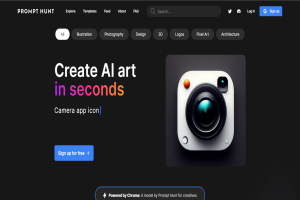
prompthunt
Craft top-quality visuals with incredible speed, control, and detail, using Chroma, our advanced AI model.
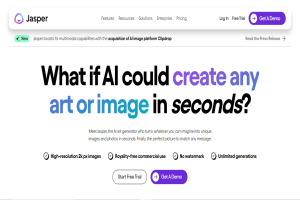
Jasper
Meet Jasper, the AI art generator who turns whatever you can imagine into unique images and photos in seconds. Finally,...
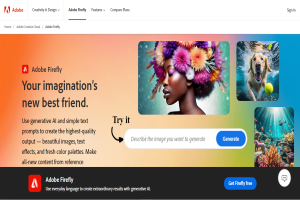
Adobe Firefly
Use generative AI and simple text prompts to create the highest-quality output — beautiful images, text effects, and fre...
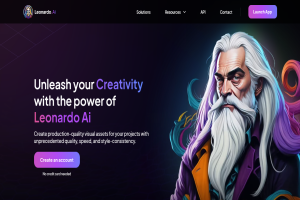
Leonardo
Create production-quality visual assets for your projects with unprecedented quality, speed, and style-consistency.

Playground
A new way to combine real and synthetic images to create stunning works of art and photorealistic images bound only by y...
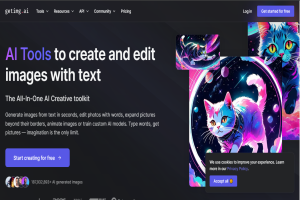
Getimg
Generate images from text in seconds, edit photos with words, expand pictures beyond their borders, animate images or tr...
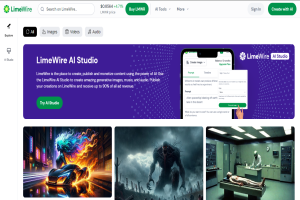
Limewire
LimeWire is the place to create, publish and monetize content using the power of AI. Use the LimeWire AI Studio to creat...

DALL·E 2
DALL·E 2 is an AI system that can create realistic images and art from a description in natural language.
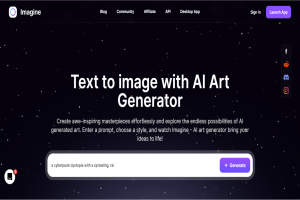
Imagine
Create awe-inspiring masterpieces effortlessly and explore the endless possibilities of AI generated art. Enter a prompt...
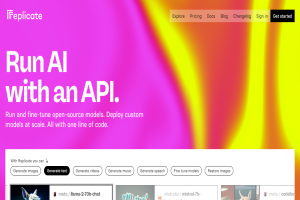
Replicate
Run and fine-tune open-source models. Deploy custom models at scale. All with one line of code.
Frequently Asked Questions
AI image generation tools use artificial intelligence, particularly machine learning models, to create images from textual descriptions. These models have been trained on large datasets of images and text to understand how to translate descriptions into visual content.
AI image generators typically use a type of neural network called a Generative Adversarial Network (GAN) or variations like diffusion models. The user inputs a text prompt, and the AI interprets this to produce an image that corresponds to the described elements and style.
Images generated by AI tools are generally considered as new creations; however, the copyright status can be complex. The output depends on the input, model, and potential use of copyrighted material during training. Users should consider originality, licensing, and use when assessing copyright issues.
While AI image generators are versatile, they have limitations based on their training data and the specificity of the user's prompt. They might struggle with highly abstract concepts or detailed, technical descriptions that do not closely align with their training.
AI-generated images are used in various fields, including entertainment, advertising, art, and education, for purposes such as creating visual content, concept art, storyboards, marketing materials, and educational illustrations.
To improve the quality, provide detailed, clear, and concise prompts. Specify styles, colors, composition, and other artistic elements explicitly. Experimentation and refinement of prompts based on initial results can also enhance quality.
Yes, ethical considerations include the potential for creating misleading images, respecting copyright and intellectual property rights, and the implications of replacing human artists in certain jobs. Transparency about AI involvement in the creation process is also crucial.
AI can generate images in the style of historical artists (those whose works are in the public domain). However, replicating the style of contemporary artists without permission can raise ethical and legal issues related to copyright.
AI image generators can create images of people based on the input prompt, but they must avoid generating recognizable images of real individuals without consent. Generated images of people are often composites of features learned during training.
AI-generated images can typically be exported in common image formats such as JPEG, PNG, and TIFF. The choice of format can depend on the intended use, such as web publishing or print.
Some advanced AI tools are capable of generating short animations or sequences of images that can be turned into animations, although this is a more complex process than generating a single static image.
Limitations include difficulties with understanding highly abstract or ambiguous prompts, potential biases in generated images based on training data, and the occasional production of nonsensical or unexpected outputs.
Consider the type of images you need, the tool's ease of use, customization options, output quality, and cost. Also, review whether the tool respects ethical guidelines and has proper data handling and privacy policies.
Yes, AI image generators can be highly effective educational tools, providing visual aids for teaching complex concepts, creating customized illustrations for textbooks, and enhancing interactive learning experiences.
The future of AI in image generation looks promising, with ongoing advancements leading to more realistic and high-quality outputs. Future developments may include better handling of complex prompts, more personalized and adaptive AI models, and broader creative applications.
Frequently Asked Questions
Q: What are AI image generation tools?
A: AI image generation tools use artificial intelligence, particularly machine learning models, to create images from textual descriptions. These models have been trained on large datasets of images and text to understand how to translate descriptions into visual content.
Q: How do AI image generators work?
A: AI image generators typically use a type of neural network called a Generative Adversarial Network (GAN) or variations like diffusion models. The user inputs a text prompt, and the AI interprets this to produce an image that corresponds to the described elements and style.
Q: Are images generated by AI tools copyrighted?
A: Images generated by AI tools are generally considered as new creations; however, the copyright status can be complex. The output depends on the input, model, and potential use of copyrighted material during training. Users should consider originality, licensing, and use when assessing copyright issues.
Q: Can AI image generators create any type of image?
A: While AI image generators are versatile, they have limitations based on their training data and the specificity of the user's prompt. They might struggle with highly abstract concepts or detailed, technical descriptions that do not closely align with their training.
Q: What are the common uses of AI-generated images?
A: AI-generated images are used in various fields, including entertainment, advertising, art, and education, for purposes such as creating visual content, concept art, storyboards, marketing materials, and educational illustrations.
Q: How can I improve the quality of AI-generated images?
A: To improve the quality, provide detailed, clear, and concise prompts. Specify styles, colors, composition, and other artistic elements explicitly. Experimentation and refinement of prompts based on initial results can also enhance quality.
Q: Are there ethical considerations with using AI image generators?
A: Yes, ethical considerations include the potential for creating misleading images, respecting copyright and intellectual property rights, and the implications of replacing human artists in certain jobs. Transparency about AI involvement in the creation process is also crucial.
Q: Can AI tools replicate the style of famous artists?
A: AI can generate images in the style of historical artists (those whose works are in the public domain). However, replicating the style of contemporary artists without permission can raise ethical and legal issues related to copyright.
Q: How does AI handle the creation of images with people in them?
A: AI image generators can create images of people based on the input prompt, but they must avoid generating recognizable images of real individuals without consent. Generated images of people are often composites of features learned during training.
Q: What formats can AI-generated images be exported in?
A: AI-generated images can typically be exported in common image formats such as JPEG, PNG, and TIFF. The choice of format can depend on the intended use, such as web publishing or print.
Q: Can AI image generators produce animated content?
A: Some advanced AI tools are capable of generating short animations or sequences of images that can be turned into animations, although this is a more complex process than generating a single static image.
Q: What are the limitations of AI image generators?
A: Limitations include difficulties with understanding highly abstract or ambiguous prompts, potential biases in generated images based on training data, and the occasional production of nonsensical or unexpected outputs.
Q: How do I choose the right AI image generation tool for my needs?
A: Consider the type of images you need, the tool's ease of use, customization options, output quality, and cost. Also, review whether the tool respects ethical guidelines and has proper data handling and privacy policies.
Q: Can AI image generators be used for educational purposes?
A: Yes, AI image generators can be highly effective educational tools, providing visual aids for teaching complex concepts, creating customized illustrations for textbooks, and enhancing interactive learning experiences.
Q: What is the future of AI in image generation?
A: The future of AI in image generation looks promising, with ongoing advancements leading to more realistic and high-quality outputs. Future developments may include better handling of complex prompts, more personalized and adaptive AI models, and broader creative applications.
Frequently Asked Questions
Q: What are AI image generation tools?
A: AI image generation tools use artificial intelligence, particularly machine learning models, to create images from textual descriptions. These models have been trained on large datasets of images and text to understand how to translate descriptions into visual content.
Q: How do AI image generators work?
A: AI image generators typically use a type of neural network called a Generative Adversarial Network (GAN) or variations like diffusion models. The user inputs a text prompt, and the AI interprets this to produce an image that corresponds to the described elements and style.
Q: Are images generated by AI tools copyrighted?
A: Images generated by AI tools are generally considered as new creations; however, the copyright status can be complex. The output depends on the input, model, and potential use of copyrighted material during training. Users should consider originality, licensing, and use when assessing copyright issues.
Q: Can AI image generators create any type of image?
A: While AI image generators are versatile, they have limitations based on their training data and the specificity of the user's prompt. They might struggle with highly abstract concepts or detailed, technical descriptions that do not closely align with their training.
Q: What are the common uses of AI-generated images?
A: AI-generated images are used in various fields, including entertainment, advertising, art, and education, for purposes such as creating visual content, concept art, storyboards, marketing materials, and educational illustrations.
Q: How can I improve the quality of AI-generated images?
A: To improve the quality, provide detailed, clear, and concise prompts. Specify styles, colors, composition, and other artistic elements explicitly. Experimentation and refinement of prompts based on initial results can also enhance quality.
Q: Are there ethical considerations with using AI image generators?
A: Yes, ethical considerations include the potential for creating misleading images, respecting copyright and intellectual property rights, and the implications of replacing human artists in certain jobs. Transparency about AI involvement in the creation process is also crucial.
Q: Can AI tools replicate the style of famous artists?
A: AI can generate images in the style of historical artists (those whose works are in the public domain). However, replicating the style of contemporary artists without permission can raise ethical and legal issues related to copyright.
Q: How does AI handle the creation of images with people in them?
A: AI image generators can create images of people based on the input prompt, but they must avoid generating recognizable images of real individuals without consent. Generated images of people are often composites of features learned during training.
Q: What formats can AI-generated images be exported in?
A: AI-generated images can typically be exported in common image formats such as JPEG, PNG, and TIFF. The choice of format can depend on the intended use, such as web publishing or print.
Q: Can AI image generators produce animated content?
A: Some advanced AI tools are capable of generating short animations or sequences of images that can be turned into animations, although this is a more complex process than generating a single static image.
Q: What are the limitations of AI image generators?
A: Limitations include difficulties with understanding highly abstract or ambiguous prompts, potential biases in generated images based on training data, and the occasional production of nonsensical or unexpected outputs.
Q: How do I choose the right AI image generation tool for my needs?
A: Consider the type of images you need, the tool's ease of use, customization options, output quality, and cost. Also, review whether the tool respects ethical guidelines and has proper data handling and privacy policies.
Q: Can AI image generators be used for educational purposes?
A: Yes, AI image generators can be highly effective educational tools, providing visual aids for teaching complex concepts, creating customized illustrations for textbooks, and enhancing interactive learning experiences.
Q: What is the future of AI in image generation?
A: The future of AI in image generation looks promising, with ongoing advancements leading to more realistic and high-quality outputs. Future developments may include better handling of complex prompts, more personalized and adaptive AI models, and broader creative applications.